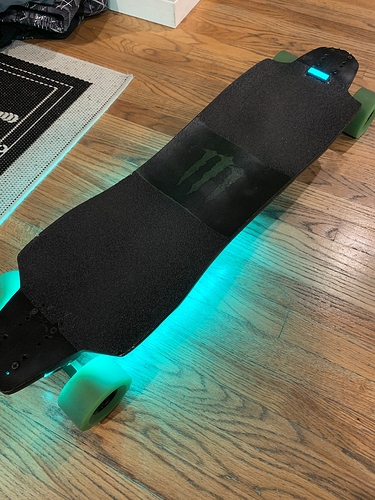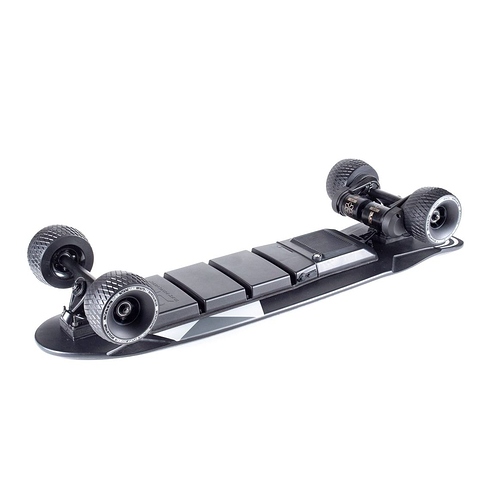V1 first build:
Most of these plans described below have been scrapped, but I will keep them here to reflect cause the build has changed so much and it’s cool to look back on
———————————————————————
V2 build:
 Hey guys, I’m trying to figure out what to do for the enclosure on my aluminum deck… It has a built in ‘rail’ system and I’m planning to utilize the rails rather than drill into the deck and I wanted to know what materials and enclosures/battery building techniques you guys might use on a deck with a little bit of flex… seeing as most of you have much more building and testing experience under your belts… I was thinking of using kydex or a similar mold-able plastic to make my enclosure but none-the-less I need some ideas
Hey guys, I’m trying to figure out what to do for the enclosure on my aluminum deck… It has a built in ‘rail’ system and I’m planning to utilize the rails rather than drill into the deck and I wanted to know what materials and enclosures/battery building techniques you guys might use on a deck with a little bit of flex… seeing as most of you have much more building and testing experience under your belts… I was thinking of using kydex or a similar mold-able plastic to make my enclosure but none-the-less I need some ideas
DECK ^
Its a 42" drop deck… so the enclosure would need to be low profile and offer flex to accompany the deck. I don’t have a big battery at all, so extra space is not a very big worry…
I don’t have a welder or a setup to braze aluminum, but I do have a 3d-printer for specialty parts. I would like to avoid making the whole enclosure 3d printed, due to its lackluster durability and overall cost, but it is available as one of the few tools I do own to make brackets or inserts of kinds, and maybe even hinges… but I’m getting off tasks.
As I was saying, a plastic enclosure, possibly molded like that of one of the slick revolution boards
Or maybe a hybrid metal/plastic or rubber flexible membrane between the battery compartments.
And if anyone has any experience with building flexible battery packs, I would like to get advice on how to build my new pack… I also don’t have a spot welder, so I need an alternative to fashion my new battery together. (probably a 10s2p or 3p without a bms, or maybe even a 12s2p and one of the neoboxes once Jeff starts taking orders
 ) I plan to make the battery removable from the board in case of warm temps or possibly situations that could cause damage to the battery… Just throw ideas, i’m not particular in what you message me.
) I plan to make the battery removable from the board in case of warm temps or possibly situations that could cause damage to the battery… Just throw ideas, i’m not particular in what you message me.
It shouldn’t be hard to make, but I’m dipping my toes into the forum here to test the waters and get a feel for the community and your creativity 
also one more thing… how do you pad your batteries in the enclosures, and would a fan or intake system be a good idea?









 They can sometimes spark if the voltages from cell to cell aren’t that’s close and it essentially normalizes voltage across the other cells you just joined in series and sometimes it pops as electricity shoots between the connectors… I was just sayin that if you joined let’s say a 6s and 7s where joined together In series, I’m pretty sure there would be a very loud pop and flash as the 7s drained to over volt the 6s and cause a cell to burst by overcharging it about the safe maximum. you can stick a fork in the nearest outlet to see a spark of your own, but most would advise against that tho
They can sometimes spark if the voltages from cell to cell aren’t that’s close and it essentially normalizes voltage across the other cells you just joined in series and sometimes it pops as electricity shoots between the connectors… I was just sayin that if you joined let’s say a 6s and 7s where joined together In series, I’m pretty sure there would be a very loud pop and flash as the 7s drained to over volt the 6s and cause a cell to burst by overcharging it about the safe maximum. you can stick a fork in the nearest outlet to see a spark of your own, but most would advise against that tho 
